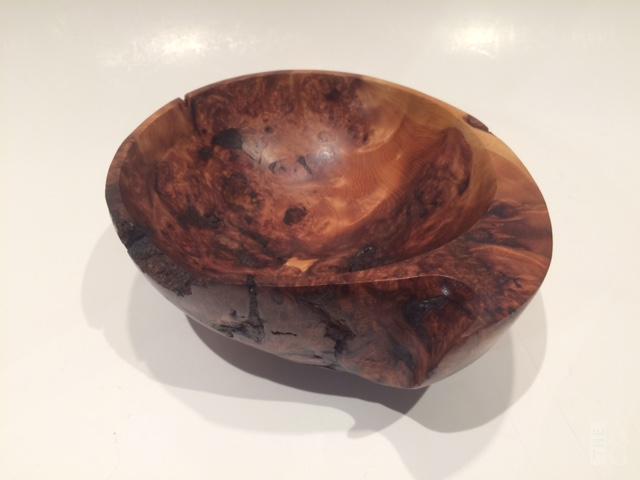Description
Oxford Comma by Bruce Edmundson
I am a fan of Robert Fulford, a columnist who writes for the National Post. He is probably in his 80’s. He writes on the arts, local and world politics, books, and anything at all really. I don’t know, but I imagine his editors give him carte blanche. He, to me, makes everything human. I have read several books he has recommended and never been disappointed.
One column was on the Oxford Comma. The Oxford is the comma placed after the and that separates a list of items and the final item in the list. Grammarians dispute its functionality, history, and necessity. Mr. Fulford’s column made me laugh out loud. I never knew I could laugh at grammar.
If you have literary friends, or just friends, ask them whether they are pro or anti Oxford comma. You may be surprised.
This small bowl, with a little tail, is an homage to Mr. Fulford. It is red cedar, and a blend of bark, burl, and plain old wood. That blend is what makes it very interesting. Most red cedar burl doesn’t show the grain very well, although it is very heave and dense. Some red cedar burls are immense, and they are a relatively common. I am not that fond of them. The color is dark, the wood is very hard. People use it to make tables, wall clocks, and signs on the side of roads with house numbers on them. You see the large burls and the tables sometimes made of them advertised for inordinate amounts of money on various web sites like Kijiji and E-Bay.
This carving is small, delicate in a way, and could be tea cup, but it’s not. I suppose I could carve a period. Or, perhaps an exclamation point, or a question mark, maybe? A colon; a semi-colon would be very difficult. I don’t think so, although the apostrophe is interesting. Not as interesting though as an Oxford Comma, as so ably demonstrated by Mr. Robert Fulford, who is more rare, entertaining, and valuable than any cedar burl, if I do say so myself.

